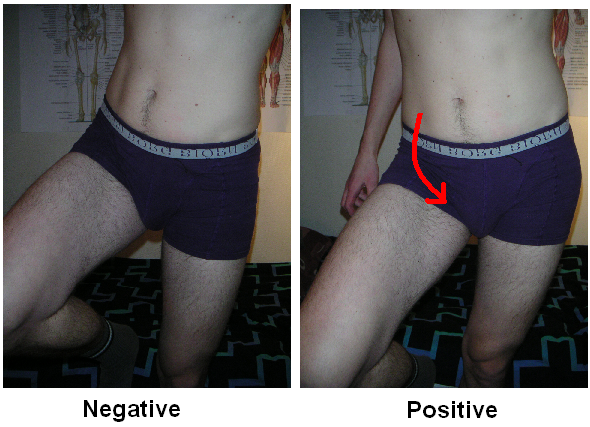Trendelenburg's sign

Please Take Over This Page and Apply to be Editor-In-Chief for this topic: There can be one or more than one Editor-In-Chief. You may also apply to be an Associate Editor-In-Chief of one of the subtopics below. Please mail us [1] to indicate your interest in serving either as an Editor-In-Chief of the entire topic or as an Associate Editor-In-Chief for a subtopic. Please be sure to attach your CV and or biographical sketch.
Trendelenburg's sign is found in people with weak abductor muscles of the hip. It was named for the German surgeon Friedrich Trendelenburg.
The Trendelenburg sign is said to be positive if, when standing on one leg, the pelvis drops on the side opposite to the stance leg. The weakness is present on the side of the stance leg. The body is not able to maintain the center of gravity on the side of the stance leg. Normally, the body shifts the weight to the stance leg, allowing the shift of the center of gravity and consequently stabilizing or balancing the body. However, in this scenario, when the patient/person lifts the opposing leg, the shift is not created and the patient/person cannot maintain balance leading to instability.
Essentially, Trendelenburg sign is caused by paralysis of the gluteus medius and minimus muscles. Paralysis may arise due to nerve damage, namely, the superior gluteal nerve.
See also
External links
{{}}